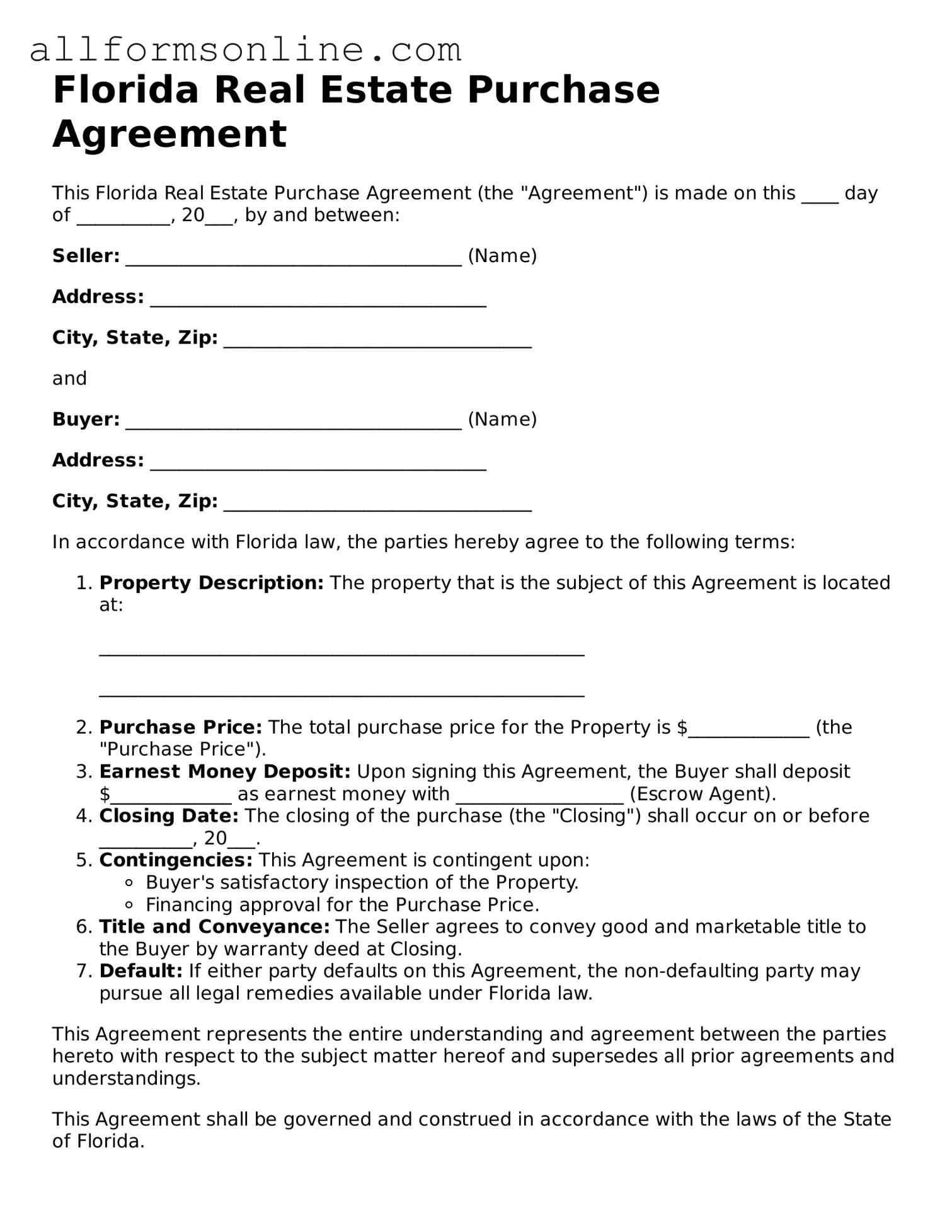What is the Florida Real Estate Purchase Agreement form?
The Florida Real Estate Purchase Agreement form is a legal document used when a buyer wants to purchase property in Florida. This form outlines the terms and conditions of the sale, including the purchase price, closing date, and any contingencies that must be met before the sale can be finalized.
Who typically uses this form?
This form is commonly used by buyers and sellers of residential real estate in Florida. Real estate agents and attorneys may also use the form to facilitate the transaction. It serves as a clear record of the agreement between the parties involved.
What key information is included in the agreement?
The agreement includes several important details. It lists the names of the buyer and seller, the property address, the purchase price, and the earnest money deposit. Additionally, it may include contingencies such as financing, inspections, and appraisals that must be satisfied for the sale to proceed.
What are contingencies, and why are they important?
Contingencies are conditions that must be met for the sale to go through. They protect both the buyer and seller. For example, a buyer may include a financing contingency to ensure they can secure a mortgage before finalizing the purchase. If the conditions are not met, the buyer can back out without losing their deposit.
How does the closing process work?
The closing process involves finalizing the sale of the property. After all contingencies are satisfied, both parties will meet to sign the necessary documents. The buyer will pay the remaining balance, and ownership will be transferred. This process typically occurs at a title company or attorney's office.
Can the agreement be modified after it is signed?
Yes, the agreement can be modified, but both parties must agree to any changes. It is important to document any modifications in writing to avoid misunderstandings. This can be done through an amendment or addendum to the original agreement.
What happens if one party does not fulfill their obligations?
If one party does not fulfill their obligations as outlined in the agreement, the other party may have legal options. This could include seeking damages or enforcing the contract. It is advisable to consult with a legal professional to understand the best course of action in such situations.
